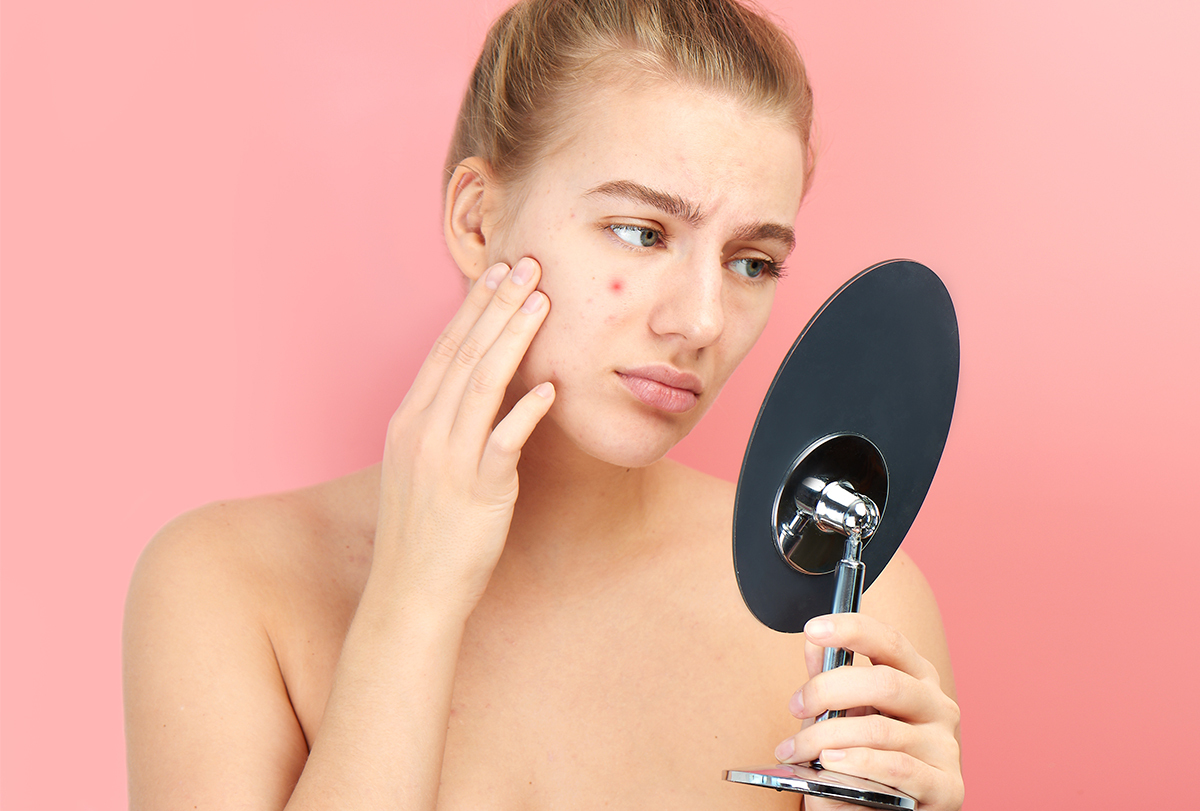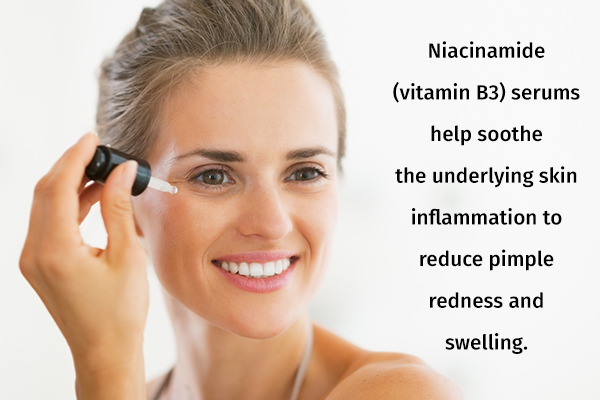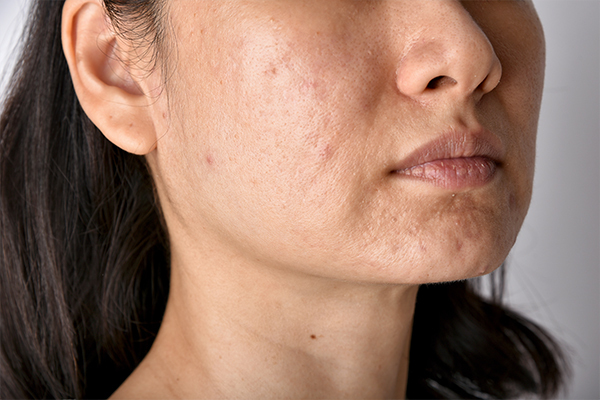In this article:
Acne affects up to 50 million Americans annually, according to the American Academy of Dermatology. (1) It must have happened to you as well – one calm night you went to bed with clear skin and woke up with a red painful spot!

Acne can be inflammatory or non-inflammatory, but only the inflammatory ones are characterized by redness.
Although pimples can appear anywhere on the body, the ones that form on the face draw the most attention and can make you extremely self-conscious. The redder the zit, the more visible it is.
This article will take you through some tried-and-tested ways to minimize the appearance of red, angry acne.
Cause of Pimple Redness
When skin pores get clogged by dead skin cells, excess sebum (natural skin oil), and other impurities, they become breeding grounds for Cutibacterium acnes (previously Propionibacterium acnes) bacteria.
The bacterial overgrowth causes infection within the congested pore, which triggers an inflammatory response from the body. The inflammation under the skin manifests in the form of red, swollen, angry pimples on the surface that can be quite painful.
Treatment Options for Pimple Redness
The following topical and in-office treatments are commonly used to treat acne breakouts, minimize the swelling, and calm the irritated skin. Try them the next time a pimple decides to make a sudden appearance.
Over-the-counter treatments
Here are some first-line treatments for mild to moderate acne that are available without a prescription:
1. Niacinamide (vitamin B3) serums

Niacinamide (vitamin B3) serums are a widely used acne treatment that is easily available over the counter.
It helps soothe the underlying skin inflammation to reduce pimple redness and swelling. It also controls sebum production to prevent clogged pores and future breakouts.
Regular application of niacinamide can also help fade the acne scars.
2. Anti-redness creams
Anti-redness creams contain skin-soothing ingredients, such as niacinamide, caffeine, licorice root, allantoin, chamomile, and aloe.
When used topically, this cream instantly cools the acne-ridden skin. The cooling effect helps decrease the underlying inflammation, which in turn relieves the redness, swelling, and irritation associated with such breakouts.
In-Office treatments

You may also consult your dermatologist for these in-office treatments:
1. Q-Switched Nd:YAG laser (in long-pulse mode)
Q-Switched Nd:YAG laser in long-pulse mode is a one-of-its-kind technological innovation with unique depth control capabilities for precise and accurate treatment.
The laser rays travel deep into the skin to get absorbed by hemoglobin and melanin chromophores. It helps treat deep-seated acne lesions by reducing the pimples and acne swelling. Research shows this laser treatment is suitable for sensitive and delicate skin.
2. Chemical peels
Chemical peels such as salicylic acid (SA), glycolic acid (GA), Jessner’s solution (JS), resorcinol, and trichloroacetic acid (TCA) peels (2) can help lighten the redness around your pimples.
When applied to the skin, these chemical peeling solutions dissolve the dead cells settled on top of the skin so that they become easier to shed. This accelerates the skin renewal process.
The epidermis (outermost layer) of the skin contains the clogged pores that cause acne breakouts. Over time, the entire upper layer of the skin is shed along with the clogged pores and replaced by new skin from underneath. This freshly formed healthy skin will have clean, tight, unclogged pores.
Plus, the removal of the infected skin will inadvertently relieve the underlying inflammation, which is responsible for the redness of your pimples. However, chemical peels may cause irritation and scaling.
3. Intense pulsed light (IPL) therapy
Intense pulsed light (IPL) therapy or photorejuvenation directs a non-ablative laser beam at the site of the pimple. The beam travels deep into the skin to get absorbed by chromophores of hemoglobin (for vascular lesions) and melanin (for pigmented lesions).
The energy helps destroy the lesion from within without damaging the surrounding tissue. (3)

Final Word
No matter how red and visible your pimple may be, popping it is never an option.
Squeezing or picking at the lesion can spread the infection deeper into the skin and even to other areas of the face through your contaminated fingers. Plus, the physical trauma can rupture the skin tissue and leave a scar, which can take forever to heal.
Thus, squeezing or picking may seem like a quick and easy fix but will only end up making your condition worse. Instead, try the above-mentioned treatments to reduce the severity and frequency of acne breakouts.
However, bear in mind that these OTC and clinical interventions are typically recommended for mild to moderate acne. For severe, chronic, or painful pimples, it’s best to consult a board-certified dermatologist before trying any treatment to avoid adverse skin reactions.

- Was this article helpful?
- YES, THANKS!NOT REALLY


